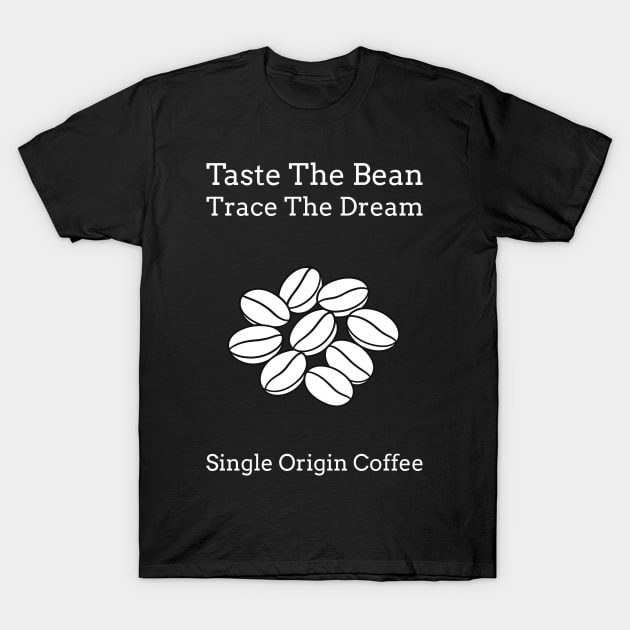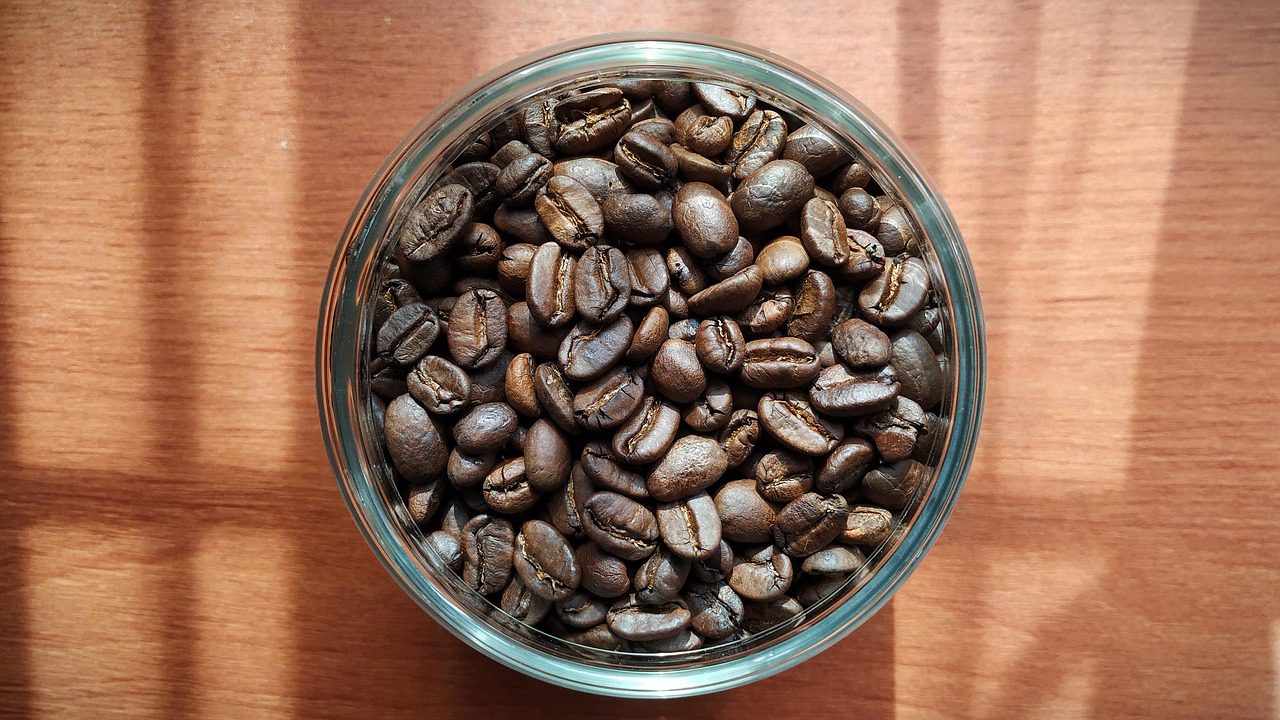A Friendly Guide to Flavor, Health, and the Best Coffee Experience
What Is Single Origin Coffee? Learn how beans from one place create unique flavors. Discover why freshness and location matter in every cup.
Ever wondered why your morning cup sometimes tastes a little extra special? The secret might be in single origin coffee.
In simple terms, single origin coffee means the coffee beans come from a single place, often a specific farm or region.
This type of coffee is important to many coffee lovers because it highlights unique flavors—almost like tasting the story of where the coffee was grown.
People love single origin coffee for its pure, bright taste in classic drinks like espresso, latte, cappuccino, and cold brew.
Whether you’re using your favorite coffee maker or exploring decaf coffee, knowing the source of your beans can make your coffee routine even more enjoyable.
This article will help you understand what makes single origin coffee different, how it might be the best coffee for flavor, and what it means for your health.
You’ll also find tips on brewing, making smart choices about supplements, and getting the most out of your daily cup.
By the end, you’ll see how a simple switch in beans could lead to a richer and safer coffee experience.
Key Takeaways:
- Single origin coffee comes from one place, bringing out special flavors.
- It’s popular in many styles, like espresso and cold brew, and works for both regular and decaf coffee.
- Choosing the right coffee beans and coffee maker helps you enjoy your best coffee every day.
- This guide will show how coffee and supplements can fit into a wellness routine.
- The article answers key health questions and explains easy ways to boost your coffee experience.
- Get simple brewing advice and details about safe supplement use.
- You’ll discover why single origin coffee matters to everyday coffee lovers.
What Is Single Origin Coffee?

Photo by Lukas
Single origin coffee is all about the beans coming from one location—think one farm, one estate, or one small growing region.
This focus on a single place lets the beans tell their own story in every cup. People ask, “what is single origin coffee?” because they want to know what makes these beans more special or unique than those in most everyday blends.
Simply put, single origin coffee highlights the natural flavors and aromas of where it grew, offering tastes you can’t find in a regular mix.
It’s ideal for anyone wanting to experience the best coffee, whether you brew espresso, latte, cappuccino, or cold brew at home.
How Single Origin Enhances Flavor and Quality
The magic of single origin coffee comes from the place where it’s grown. Soil, climate, elevation, and even the air impact the beans’ flavors.
Coffee experts call this special mix of growing conditions “terroir” (pronounced “ter-wahr”). Terroir is like a coffee bean’s fingerprint—it shapes taste, scent, acidity, and mouthfeel.
- Unique Tastes: A bean from Ethiopia might taste fruity and floral, while a bean from Colombia can bring out nutty or chocolate notes.
- Natural Aromas: Because the beans aren’t blended, each bag captures the true scent of the region.
- Clear Quality: Single origin beans, when roasted and brewed right, are often fresher and brighter—letting their natural character shine.
When you use single origin beans in an espresso or a latte, you get a clean flavor that stands out. The taste isn’t muddled by beans from other places.
In cold brew, single origin brings deeper, clearer flavors that are hard to miss.
For anyone trying to enjoy the best coffee or even a smooth decaf coffee, the single source makes every cup easy to appreciate.
If you’re interested in a deeper breakdown of why these flavors vary, you can check out this helpful overview Coffee Basics: Single-Origin Coffee.
Best Brewing Methods for Single Origin Coffee
To really enjoy what single origin beans offer, the brewing method matters.
Certain brewing styles are better at bringing out their unique notes, textures, and aromas.
Here are some popular brewing methods that highlight single origin flavors:
- Espresso: Packs a punch and really spotlights delicate fruity or nutty flavors.
- Pour-over (like V60 or Chemex): Bright, clean, and lets you taste subtle notes with clarity.
- French Press: Makes a rich, full-bodied cup, perfect for beans with bold or chocolatey notes. For tips, see our French press coffee brewing guide.
- Cold Brew: Draws out sweetness and mild acidity, making it great for beans with floral or citrus flavors.
Choosing the right brew method lets you capture every detail in the beans. A pour-over might be right if you want a delicate cup, while a French press brings out deeper flavors.
You can find more tips in this guide about coffee brewing methods.
When you experiment with different coffee makers and brewing styles, you’ll find the best coffee balance for you.
Remember, single origin beans are about enjoying the natural taste of coffee, no matter how you like your cup.
If you enjoy a cappuccino, latte, or even decaf coffee, these brewing methods can bring out the flavors that make your morning routine feel special.
How to Choose, Brew, and Enjoy Single Origin Coffee Safely
Choosing, brewing, and enjoying single origin coffee is more than just picking any bag off the shelf.
With more people searching for “what is single origin coffee,” it helps to know how to read a coffee bag, what labels mean, how to select what’s right for you—including decaf or ethical options—and how to enjoy your cup safely, especially if you use supplements.
Let’s break down everything you need for a healthy and delicious cup.
Understanding Labels: Decaf, Fair Trade, and More

Photo by Cup of Couple
Labels on single origin coffee bags can feel like a puzzle. Let’s make them simple:
- Single Origin: All beans come from the same region, farm, or cooperative. This means your espresso, latte, cold brew, or cappuccino made with these beans will show off the true flavors of that place.
- Decaf Coffee: If you’re sensitive to caffeine but still want the best coffee taste, look for “decaf” on the label. Many single origin options are now available in decaf, so you don’t have to miss out on flavor.
- Fair Trade: This means the farm workers who grew your coffee beans received better wages and worked in safer conditions. It’s a solid choice for buyers who prefer products that care for people, not just profits.
- Organic: Grown without chemical fertilizers or pesticides, organic coffee may appeal to anyone wanting a cleaner cup.
- Roast Date: Fresher coffee tastes better. The closer you are to the roast date, the brighter the flavors—perfect for letting single origin beans shine.
- Roast Level: Light roasts usually highlight fruity or floral notes. Medium and dark roasts bring out deeper, sometimes chocolatey flavors.
How should a beginner choose?
- Decide if you want regular or decaf coffee.
- Check for ethical labels like “Fair Trade” or “Organic.”
- Think about what flavors you like (read tasting notes on the bag).
- Try small bags first, or buy from a local roaster who lets you sample.
- Consider the brewing method; lighter roasts work well for pour over and cold brew, while medium to dark may suit an espresso or French press.
Learn more about the differences between types of beans in our Arabica vs Robusta Coffee Guide.
This can help you find the best coffee for your morning routine.
Safe Use of Coffee and Supplements Like Java Burn
Coffee is safe for most people, but using it with wellness supplements deserves a quick look.
Some coffee drinkers add products like Java Burn to their cup as part of a healthy lifestyle.
Tips for enjoying coffee and supplements together:
- Stick to safe serving sizes: Don’t load up on extra scoops or drink too many cups, even of the best coffee.
- Check ingredients: Make sure any supplement (like Java Burn) is safe with your health conditions or prescriptions.
- Time your drinks: If you’re sensitive to caffeine, have your main cup in the morning, and keep afternoon caffeine or supplements light so sleep isn’t disturbed.
- Start slow: If it’s your first time using a supplement, try a small amount to see how your body feels.
- Hydrate: Coffee can be a little dehydrating, so drink water throughout the day.
Supplements like Java Burn mix into coffee and are designed to support metabolism as part of a balanced daily routine.
If you want to see how Java Burn can fit into your healthy habits, you can learn more about Java Burn.
For extra tips, check our article on Time-Saving Coffee Tips for Mornings to keep your coffee routine easy and safe, even on busy days.
Key takeaways:
- Knowing what single origin coffee is helps you make better flavor choices.
- Coffee labels guide you to the best coffee for taste and values.
- Decaf and Fair Trade options make it easy to find coffee for every need.
- Using supplements like Java Burn works best when you keep safety basics in mind.
- Always listen to your body and enjoy your coffee in a way that fits your life.
With a little label skill and a thoughtful approach, you can choose, brew, and enjoy single origin coffee safely, whether you love a strong espresso, a sweet latte, or a refreshing cold brew.
Key Takeaways: What to Remember About Single Origin Coffee
It’s easy to get caught up in the details of bean types, brewing gadgets, and health hacks.
But at its heart, the answer to “what is single origin coffee” is simple: it’s coffee that comes from one place and lets you taste the real story of that region. Below, you’ll find the main ideas and helpful reminders about single origin coffee.
These points will set you up for delicious mornings, whether you love espresso, latte, cappuccino, cold brew, or even decaf coffee.
The Basics: Single Origin Means Pure Flavor

Photo by cottonbro studio
- Single origin coffee is made from beans grown in one region or even on one farm. That means your cup has a unique taste, untouched by mixing with beans from other places.
- Every bag actually offers a “taste of place.” One sip of single origin Colombian or Ethiopian coffee, and you’ll notice how different it is from blends you may find at the grocery store.
- For those wondering about health or dietary needs, single origin coffee is available as regular or decaf coffee. You can enjoy pure coffee flavor on your terms.
- If you choose the right coffee maker (from a simple pour-over to a sturdy espresso machine), you can make the best coffee right at home.
If you’re curious about how the specific origin shapes taste, this article explains single origin from farm to cup.
Real Benefits: Why Coffee Lovers Choose It
People everywhere are asking, “What makes single origin coffee special?” Here are the key reasons:
- Clear, Bright Flavors: Since the beans aren’t blended, you get bold, clean notes—floral, fruity, or chocolatey—straight from the region.
- Better Control: Single origin beans let you control your brew and highlight flavor. Try making espresso, a silky latte, or cold brew and see the difference yourself.
- Explore the World: It’s like traveling with your tastebuds. Each bag comes with its own story, climate, and culture.
Looking for a deeper dive into flavor profiles from different places? Spread out your coffee map by visiting the Coffee Origins Explained guide.
Key Takeaways at a Glance
Here are the main lessons to tuck away for your next coffee shop visit or grocery run:
- Single origin coffee only comes from one place (like a specific farm or small area).
- You’ll taste flavors shaped by soil, climate, and altitude.
- No blends—just pure, unique notes in each cup.
- Available in both regular and decaf coffee options.
- Brew methods matter! Try espresso for bolder notes, pour-over for clarity, or French press for rich, deep flavor.
- Great for adventurous sippers who want the best coffee experience every morning.
- Look for labels and stories on each bag. These details share the bean’s journey to your mug.
- Perfect for making cappuccino, latte, or cold brew at home (just choose the right coffee beans and coffee maker).
Want to know why some regions are coffee legends? Check out our Guatemalan Antigua Coffee Guide to see how origin impacts taste.
Easy Tips for Coffee Drinkers
If you’re new to single origin beans or want to get more out of each cup, keep these simple tips in mind:
- Read the Label: It will list the origin, tasting notes, roast level, and if the coffee is decaf.
- Match Roast to Brew: Light roasts for pour-over, medium-darks for espresso.
- Grind Just Before Brewing: Fresh ground means fresher flavor.
- Store with Care: Keep beans in a cool, dry place, in a sealed container.
- Mix With Care: Want to experiment? Try single origin beans in classic drinks like latte or cappuccino for a unique spin.
For more pro tips, see our advice on better coffee brewing.
What’s the Takeaway?
- Single origin coffee is about honest, unblended, location-driven taste.
- You don’t need a fancy setup—just start with the right coffee, a little know-how, and curiosity.
- Drip, pour-over, French press, or espresso—they’re all good ways to enjoy single origin beans.
- You’ll find decaf coffee options for those avoiding caffeine.
- Every bag supports farmers, sometimes even whole communities, by highlighting their hard work and traditions.
- Whether you make your coffee with a simple French press or a top-notch espresso machine, you’re tasting something real.
To explore more about unique coffee beans, take a look at our guide on what is Liberica coffee. There’s a whole world outside the usual Arabica and Robusta varieties!
Single origin coffee isn’t just a fancy label—it’s an easy way to bring bright, new flavors into your day.
Grab a bag, brew to your liking, and enjoy the real taste of a single place with every cup.
Frequently Asked Questions About Single Origin Coffee
Curious about what makes single origin coffee so special?
You’re not alone! Many coffee lovers want to know how this kind of coffee compares to blends, what makes it unique, and how to get the best cup—whether you’re using an espresso machine, making a latte or cappuccino, or just enjoying cold brew at home.
Let’s answer some of the most common questions about single origin beans to help you get the most out of your daily cup.
What is Single Origin Coffee? How is it Different from Blends?
Single origin coffee means all the coffee beans in your bag come from one country, region, or sometimes even a single farm.
This is different from coffee blends, which mix beans from different places to create a balanced average flavor.
With single origin, each cup gives you the pure taste of its home—like a postcard from the farm itself!
A big reason coffee fans seek single origin coffee is for its unique flavors. Environmental factors like soil, weather, and altitude influence how the beans taste, so a Colombian coffee will naturally taste different from an Ethiopian or Guatemalan one.
For curious drinkers who ask “what is single origin coffee,” it’s a chance to experience these natural flavors in their true form.
Want a clear breakdown? You’ll find more detail in this simple beginner’s guide to single-origin coffees.
Does Single Origin Coffee Taste Better? Why Do Coffee Lovers Choose It?
Taste is personal, but single origin coffee is often described as brighter and more distinctive. You might get fruity, floral, nutty, or even chocolate notes—without a muddled finish.
Blends are crafted for smoothness and balance, while single origins are about celebrating what makes each bean stand out.
Key takeaways:
- Single origin coffee highlights natural flavors.
- Every cup is a new taste adventure.
- It’s perfect if you want to explore flavor in your espresso, latte, cappuccino, or even a refreshing cold brew.
Is Single Origin Coffee Better for Espresso, Latte, Cappuccino, or Cold Brew?
Single origin beans shine in any brewing method! Here’s a quick guide for picking the best coffee for your style:
- Espresso: Try single origin beans with complex, bold profiles. The natural flavors really pop in espresso’s concentrated form.
- Latte & Cappuccino: Many love single origins in milk-based drinks for the unique layers they add. For ideas, check out popular bean choices for milky espresso drinks.
- Cold Brew: Single origin coffee makes for a crisp, sweet cold brew, especially when using beans with fruit or citrus notes.
Medium roasts work well for cold brew and iced lattes because they balance acidity and richness.
You can dig deeper into picking beans by reading this guide to the best espresso beans for iced lattes and cold brew.
Can I Get Single Origin Decaf Coffee?
Absolutely! Single origin decaf coffee lets you enjoy all the flavors with none of the caffeine jitters.
Roasters now offer high-quality decaf options from specific regions, so everyone can join the single origin fun.
You’ll still experience the unique flavor profile of that origin, whether in a latte, cappuccino, or a plain cup.
What Coffee Maker is Best for Single Origin Beans?
You can use any coffee maker to brew single origin beans—espresso machines, pour-over drippers, French presses, or even simple drip coffee makers.
To get the most flavor, pick a method that matches your taste:
- Pour-over (like V60 or Chemex): Brings out delicate notes.
- Espresso machine: Focuses bold, intense flavors.
- French press: Smooth, fuller-bodied results.
- Cold brew makers: Highlight sweet and mellow notes.
Matching the right technique to your personal preferences can make every cup the best coffee for you.
For tips on choosing gear, check out advice on picking the best coffee maker for your morning routine.

Photo by Tom Cordner
Do Single Origin Coffees Cost More?
Single origin beans can be a bit pricier, but you’re paying for traceability and quality. Harvests are often smaller, and careful processing means a better taste.
For many coffee lovers, it’s worth it for a more meaningful cup—especially if you enjoy knowing exactly where your coffee comes from.
How Should I Store Single Origin Coffee Beans?
Keep your beans fresh by storing them in an airtight container, away from light and heat. Grind your beans just before brewing for the best cup.
This simple habit helps preserve those special single origin flavors.
Can Supplements Like Java Burn Be Used with Single Origin Coffee?
Yes! Java Burn and similar supplements mix into any style—espresso, latte, or cold brew. Start with your favorite single origin brew, add the recommended amount of supplement, and enjoy.
Always check product guidance and listen to your body. If you want more details on safe supplement use, visit our dedicated Java Burn guide.
Quick FAQ Roundup
Here’s a rapid-fire set of answers to common questions about single origin coffee:
- What is single origin coffee?
It’s coffee from one country, region, or farm, prized for unique flavors. - Does it taste better than blends?
Single origin gives bolder, clearer flavors—best for exploring something new. - Can you get decaf single origin?
Yes, many roasters offer single origin decaf with true regional flavor. - What’s the best method to brew it?
Use methods that highlight flavors: pour-over, French press, or espresso. - Is it good for espresso or milk drinks?
Yes, just pick a bean with flavors you love for classic drinks like latte, cappuccino, or cold brew. - Will it work with any coffee maker?
Absolutely, from basic drip brewers to advanced espresso machines. - Can I use supplements like Java Burn?
Yes, mix with your regular or decaf single origin for health support—just follow use instructions.
If you have more questions, the Coffee Basics: Single-Origin Coffee guide covers even more details.
Key Takeaways:
- Single origin coffee lets you taste the unique traits of a specific place.
- Choose beans and brew styles based on your favorite flavors and preferred drinks—espresso, latte, cappuccino, or cold brew.
- Both regular and decaf coffee options are available.
- Supplements like Java Burn mix in easily if you want an extra wellness boost.
- Store your beans well, use your favorite coffee maker, and explore confidently—single origin means there’s always something new to try.
For even more tips on enjoying all kinds of coffee, check out our complete brewing guides.
Check Out Our Single origin Coffee Merch Today!

Conclusion
Single origin coffee makes every cup feel a bit more special by letting you taste exactly where your beans come from.
Whether you love a bold espresso, a creamy latte, a classic cappuccino, or a smooth cold brew, choosing coffee beans from one place brings out clean, honest flavors that blends can’t match.
You can enjoy single origin options even if you drink decaf coffee, so there’s always a way to fit this experience into your day.
If you’re curious about how to combine coffee with supplements like Java Burn, the key is to keep it simple and safe.
For tips on adding supplements without changing the taste of your morning coffee, check out our guide on adding Java Burn to coffee without altering taste.
Remember, using your favorite coffee maker and paying attention to freshness makes each morning feel bright and satisfying.
For anyone wanting to try another unique coffee variety, explore What is Liberica Coffee? and discover new flavors from around the world.
Coffee, including supplements like Java Burn, fits into a healthy life by giving you a fun, energy-boosting ritual that can support wellness when used thoughtfully.
Enjoy your cup, listen to your body, and keep coffee a safe, delicious part of your daily routine.
Key Takeaways:
- Single origin coffee comes from one region or farm, giving pure and distinct flavors.
- You can brew it as espresso, latte, cappuccino, or cold brew, with regular or decaf coffee beans.
- Good habits—like grinding fresh, using the right coffee maker, and storing beans well—help every cup shine.
- Safe supplement use, like with Java Burn, adds to health benefits but should be done in moderation.
- Enjoy exploring different coffee origins and brewing methods for the best coffee experience every day.
Thank you for sharing your time and love for coffee with us! What single origin will you try next?
Still need answer to your Coffee questions? Try our helpful Tool below…It’s FREE!







